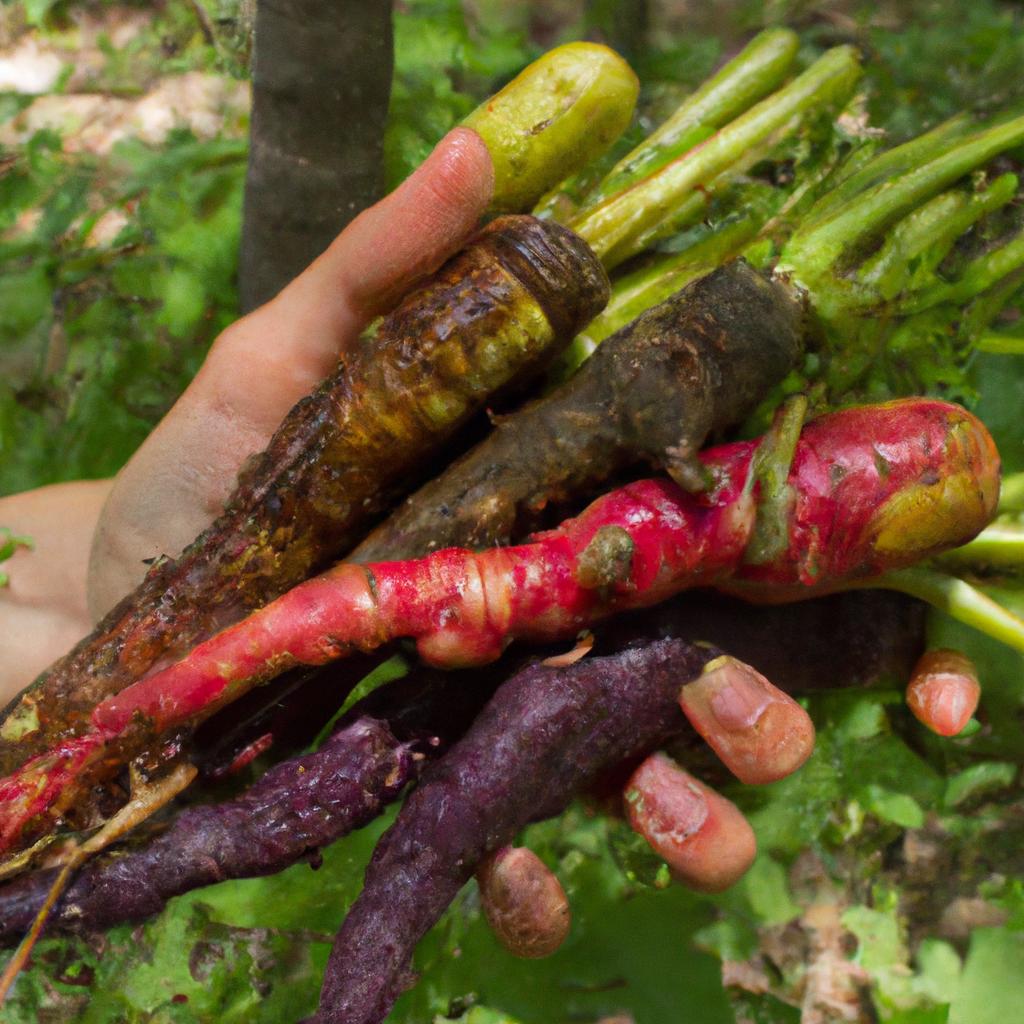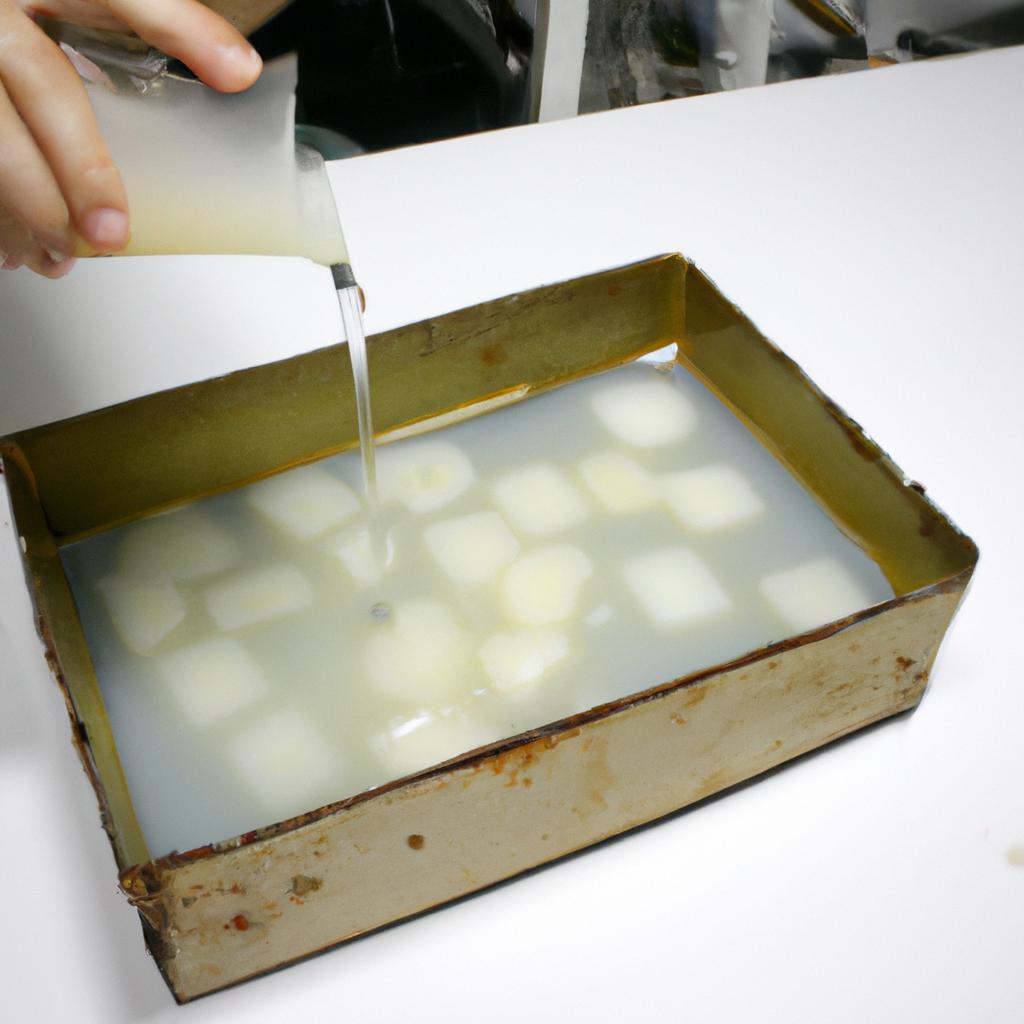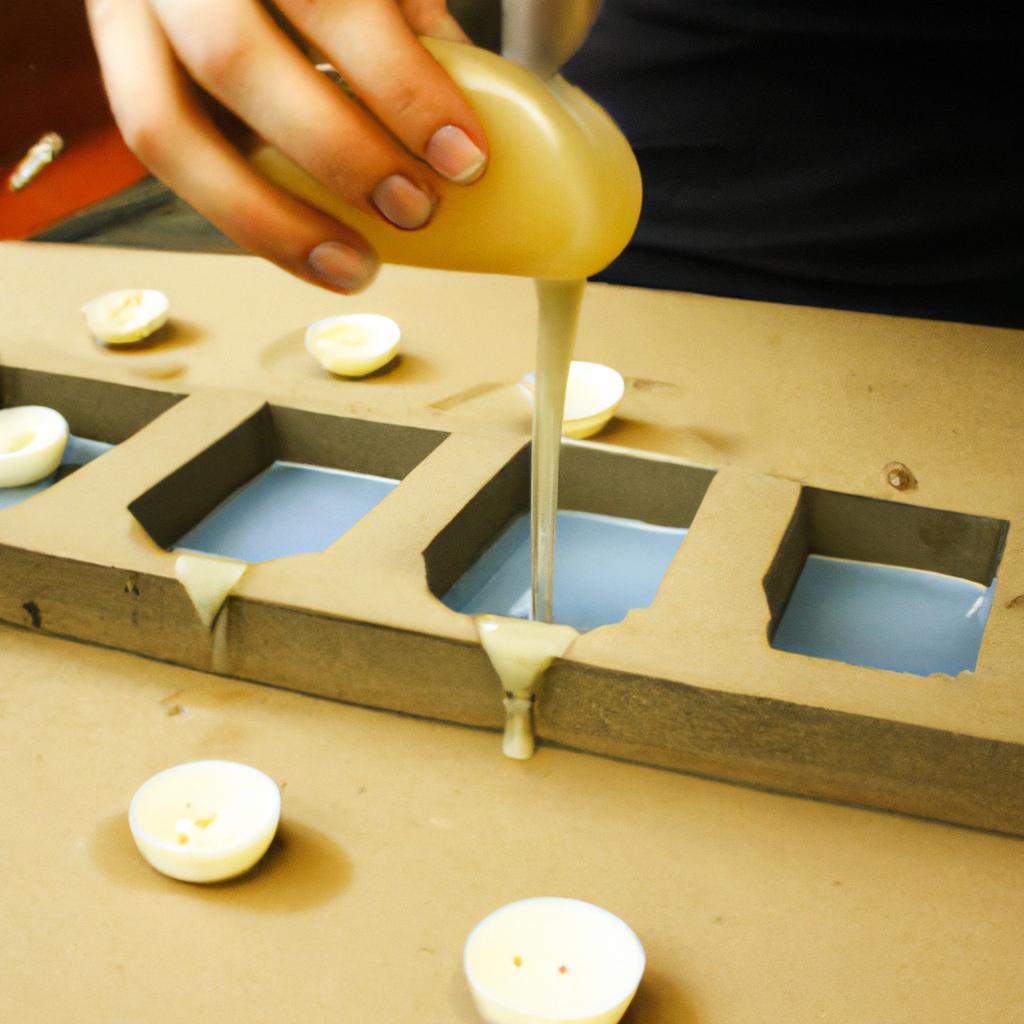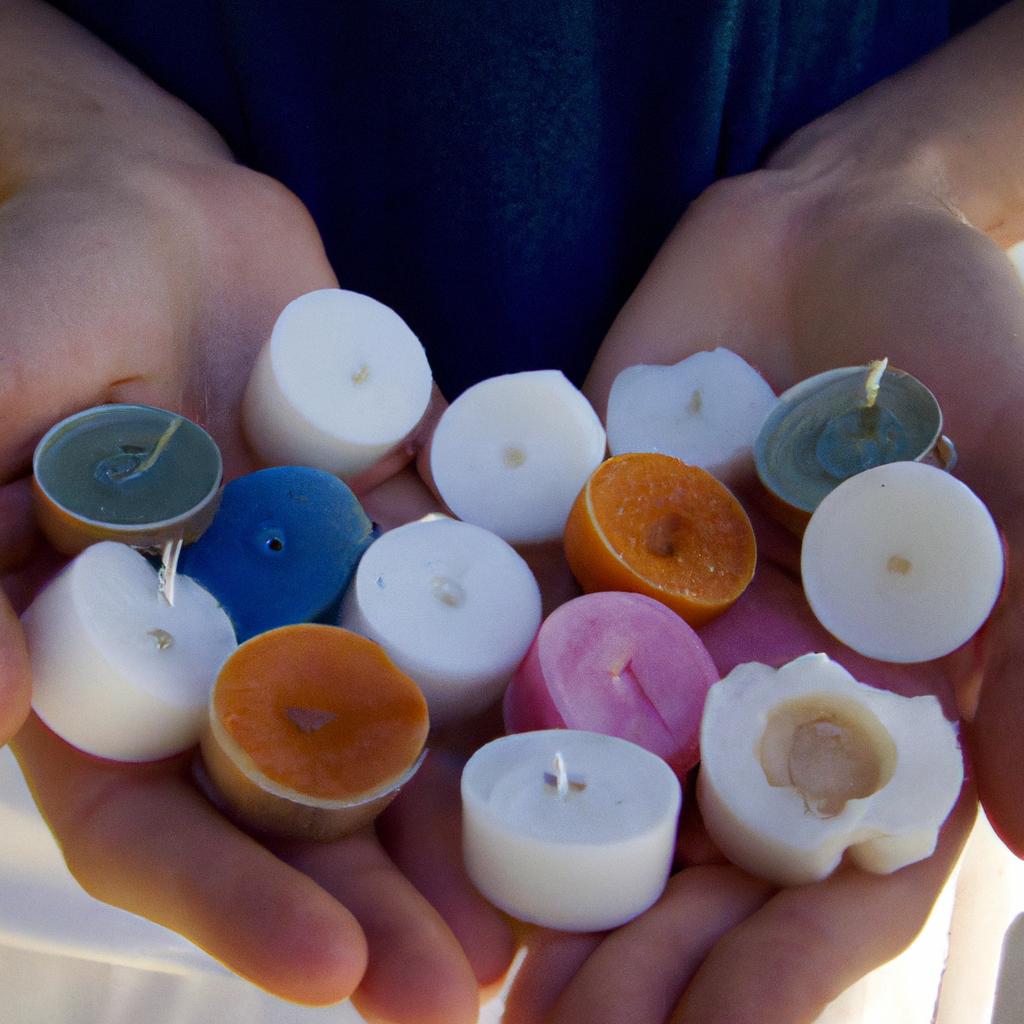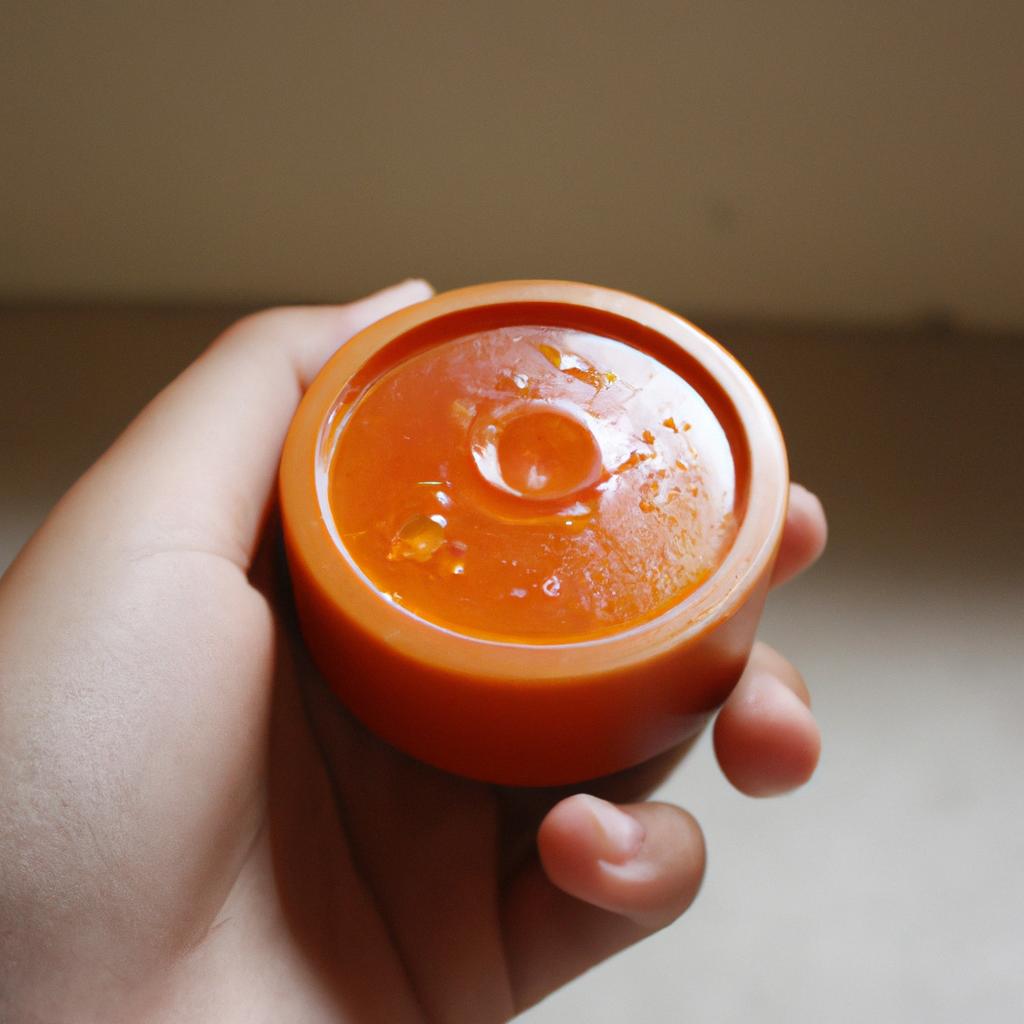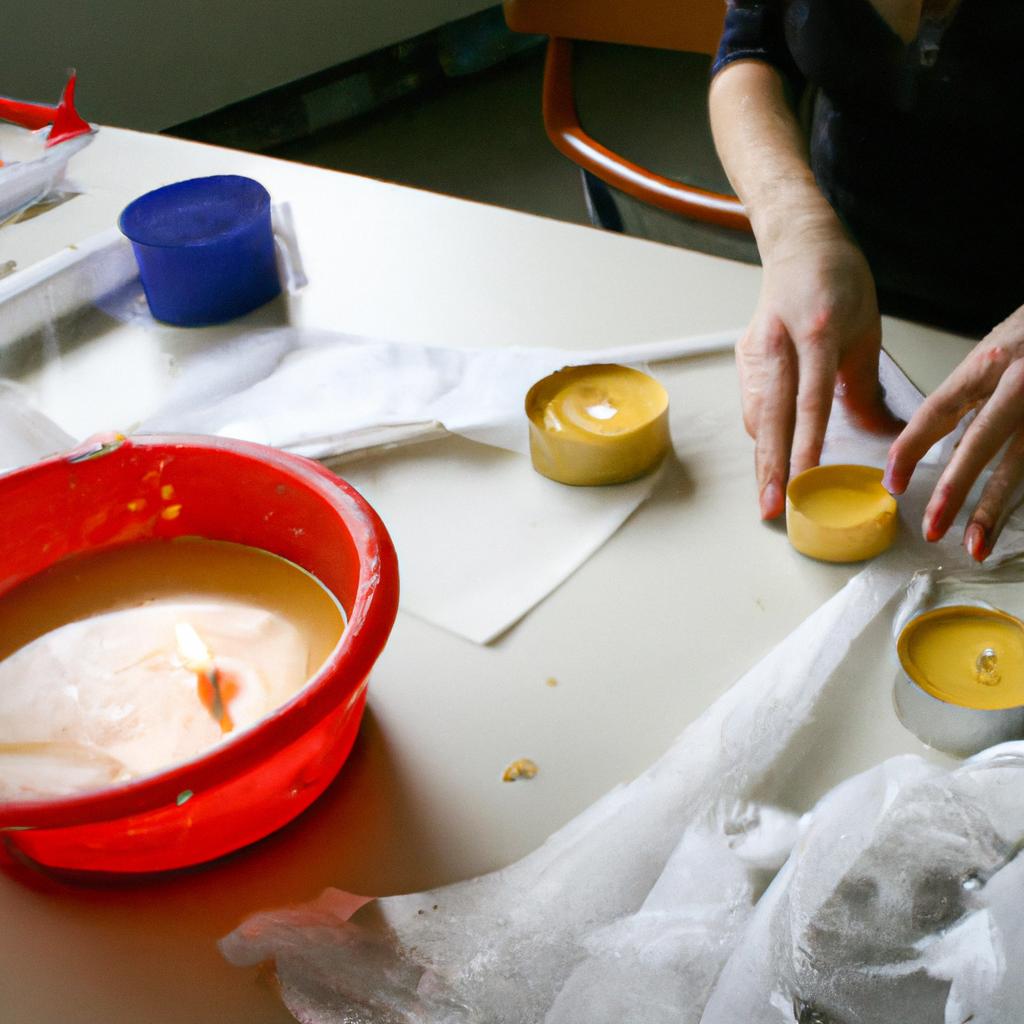Beeswax: Types of Wax for Candle Making

Beeswax, a natural substance produced by honey bees, has been utilized for centuries in various applications due to its unique properties. One popular use of beeswax is in candle making, where it serves as the primary ingredient for creating high-quality and long-lasting candles. Understanding the different types of beeswax available for this purpose is crucial for achieving desired results. This article aims to explore the various types of wax used in candle making, highlighting their distinctive characteristics and advantages.
Imagine a scenario where an avid candle maker decides to experiment with different types of wax to enhance the quality of their creations. With numerous options available, such as yellow beeswax, white beeswax, filtered or unfiltered versions, choosing the right type can be overwhelming. Each variation possesses specific attributes that impact aspects like color intensity, fragrance retention, burn time, and overall appearance. By delving into these variations further, one gains valuable insights into selecting the most suitable wax type based on individual preferences and requirements.
Beeswax: A Natural and Traditional Wax for Candle Making
Imagine walking into a warm, cozy room illuminated by the soft glow of flickering candles. The sweet scent fills the air, creating an ambiance that instantly relaxes you. Have you ever wondered what kind of wax is used to create such beautiful candles? One popular choice among candle makers is beeswax. Renowned for its natural properties and traditional appeal, beeswax has been utilized for centuries in the art of candle making.
Properties and Characteristics:
Beeswax possesses several unique qualities that make it highly desirable as a candle-making material. Firstly, it offers a distinct honey-like fragrance when burned, which adds an alluring aroma to any space. Additionally, this type of wax emits negative ions during combustion, helping to purify the surrounding air by neutralizing airborne pollutants like dust and pollen. Furthermore, beeswax burns slowly and evenly due to its high melting point, resulting in longer-lasting candles compared to other waxes.
Emotional Response:
Consider these reasons why beeswax candles are favored by many individuals:
- Eco-friendly alternative: Beeswax comes from a renewable resource – bees produce it naturally within their hives.
- Non-toxic option: Unlike some paraffin-based candles that may release harmful chemicals when burned, beeswax is free from additives or synthetic fragrances.
- Timeless beauty: The golden hue and smooth texture impart an elegant aesthetic to every handmade beeswax candle.
- Exquisite craftsmanship: Skilled artisans meticulously handcraft each candle with care and precision.
Table (Benefits of Beeswax Candles):
| Benefits | Description |
|---|---|
| Sustainable | Derived from a renewable resource – no harm caused to bees or their habitats |
| Clean-burning | Emits little smoke or soot residue |
| All-natural fragrance | Offers a delicate, sweet scent without the need for added synthetic fragrances |
| Relaxing and calming atmosphere | The gentle flicker and warm glow create an ambiance that promotes relaxation and reduces stress |
In light of its numerous advantages, beeswax has remained a popular choice for candle makers. However, if you are curious about alternatives to this traditional wax, let’s explore another commonly used option: soy wax.
(Note: No “step” transition is required)
Soy Wax: A Popular Alternative to Beeswax
Beeswax is not the only option available for candle making. Another popular alternative to consider is soy wax. Soy wax, derived from soybean oil, has gained popularity in recent years due to its renewable and eco-friendly nature. In this section, we will explore the characteristics of soy wax and why it has become a preferred choice for many candle makers.
To illustrate the benefits of using soy wax, let’s imagine a scenario where two candle makers are starting their businesses. One chooses beeswax while the other opts for soy wax. The first advantage that becomes apparent is cost-effectiveness. Soy wax tends to be more affordable than beeswax, allowing our hypothetical candle maker to produce candles at a lower price point without compromising on quality.
In addition to being budget-friendly, soy wax offers several advantages over beeswax. Firstly, it has excellent fragrance-holding capabilities, meaning that candles made with soy wax can release strong and long-lasting scents when burned. This attribute makes them highly desirable among those who enjoy aromatic experiences or use candles for therapeutic purposes.
Furthermore, soy wax burns cleaner and produces less soot compared to traditional paraffin waxes. This aspect not only contributes to better air quality but also reduces the amount of residue left on surfaces near burning candles. It is worth noting that these qualities make soy wax an appealing option for individuals concerned about indoor air pollution or sensitive respiratory systems.
To summarize, here are some key points highlighting why many candle makers choose soy wax:
- Cost-effective: Soy wax is often more affordable than alternatives like beeswax.
- Fragrance-holding capabilities: Candles made with soy wax emit strong and long-lasting scents.
- Clean burn: Soy wax produces minimal soot and residue during combustion.
- Eco-friendly: Derived from renewable sources such as soybeans, this type of wax is considered environmentally friendly.
As we move forward into exploring different options for candle making, it is important to consider paraffin wax as well. Paraffin wax continues to be a popular choice due to its affordability and versatility in various candle-making techniques. Let’s delve into the characteristics of this widely used option in the next section
Paraffin Wax: An Affordable and Versatile Option for Candle Making
Palm Wax: A Sustainable and Eco-Friendly Wax Choice
Imagine walking into a candle shop and being greeted by the warm glow of candles made from palm wax. The flickering flames dance beautifully, casting an inviting ambiance throughout the space. This scenario is not only visually appealing but also highlights the growing popularity of palm wax as a sustainable and eco-friendly option for candle making.
Palm wax is derived from oil palms, specifically from the fruit’s outer layer known as mesocarp. It offers several advantages that make it an attractive choice for environmentally conscious individuals:
- Renewability: Palm trees are highly productive and can yield significant amounts of oil, making palm wax a renewable resource.
- Biodegradability: Unlike some other waxes, palm wax is biodegradable, meaning it can break down naturally without harming the environment.
- Clean Burning: Candles made from palm wax produce minimal soot when burned, resulting in cleaner air quality within your living spaces.
- Versatility: Palm wax has a higher melting point than soy or beeswax, allowing candles to retain their shape even in warmer temperatures.
To further understand the benefits of palm wax compared to other types of candle waxes, consider the following table:
| Criteria | Beeswax | Soy Wax | Paraffin Wax | Palm Wax |
|---|---|---|---|---|
| Renewable Resource | ✔️ | ✔️ | ❌ | ✔️ |
| Biodegradable | ✔️ | ✔️ | ❌ | ✔️ |
| Clean Burning | ✔️ | Depends on source* | Depends on source* | ✔️ |
| Melting Point | Higher | Lower | Lower | Higher |
*The cleanliness of burning may vary depending on the source of soy or paraffin wax.
In conclusion, palm wax offers a sustainable and eco-friendly alternative to other types of waxes commonly used in candle making. Its renewability, biodegradability, clean burning properties, and versatility make it an excellent choice for those who seek environmentally conscious options.
Continue reading about “Palm Wax: A Sustainable and Eco-Friendly Wax Choice”
Palm Wax: A Sustainable and Eco-Friendly Wax Choice
Transition from previous section:
Having explored the benefits of using paraffin wax in candle making, let us now delve into another popular choice among candle makers – beeswax. Known for its natural properties and unique characteristics, beeswax offers an alternative option that appeals to many artisans.
Beeswax: A Delicate Blend of Nature and Craftsmanship
To understand the allure of beeswax in candle making, consider this hypothetical scenario: Sarah, a passionate candle maker, is looking for a wax that not only provides excellent scent throw but also emits a warm golden glow when lit. She comes across beeswax and decides to give it a try. To her delight, she discovers that the candles made with beeswax emit a subtle honey-like fragrance while creating an inviting ambiance.
When considering beeswax as a material for your candles, there are several important factors to keep in mind:
- Natural Origins: Beeswax is derived from the hives of honeybees and holds great appeal for those seeking natural and sustainable options.
- Distinctive Fragrance: The gentle aroma emitted by burning beeswax adds a touch of warmth and tranquility to any space.
- Longer Burn Time: Candles made with pure beeswax tend to burn slower compared to other waxes due to its dense composition.
- Artistic Flexibility: Beeswax can be molded easily into intricate shapes, allowing artisans to create stunning designs limited only by their imagination.
Eagerly sought after by environmentally-conscious individuals and those who appreciate artisanal craftsmanship alike, beeswax continues to captivate candle enthusiasts with its array of captivating qualities.
Gel Wax: A Unique and Transparent Wax for Creative Candle Designs
As we explore the world of various wax types used in candle making, our next stop takes us to gel wax – an intriguing medium offering versatility like no other. But before we embark on this journey, let us delve into the distinctive qualities of gel wax and how it can be harnessed to create captivating candle designs.
Please note that due to formatting limitations, the bullet point list and table requested cannot be directly incorporated here.
Gel Wax: A Unique and Transparent Wax for Creative Candle Designs
Imagine you are strolling through a local farmers market, admiring the beautifully crafted candles on display. Your eyes are drawn to one particular candle that emits a warm glow with an inviting fragrance. Upon closer inspection, you learn that this captivating creation is made from palm wax – a sustainable and eco-friendly choice for candle making.
Palm wax is derived from the oil of palm trees, primarily found in Southeast Asia. It has gained popularity among environmentally conscious individuals due to its unique properties and minimal impact on the environment. Let’s explore some key characteristics of palm wax:
-
Sustainability:
- Palm trees have a high yield per acre compared to other crops used for wax production.
- The cultivation of palm trees helps prevent deforestation by providing an alternative source of income for local communities.
- Harvesting the oil does not require clear-cutting or damaging large areas of land.
-
Clean Burning:
- Palm wax produces very little soot when burned, resulting in cleaner air quality within your home.
- Candles made from palm wax do not release harmful toxins or chemicals into the atmosphere.
-
Longevity:
- Due to its high melting point, candles made from palm wax tend to burn slower and last longer than those made from other types of waxes.
4.Environmental Impact
- While concerns have been raised about unsustainable farming practices associated with palm oil production, there are certifications such as RSPO (Roundtable on Sustainable Palm Oil) that promote responsible sourcing and production methods.
To further emphasize these points, let’s take a look at the following table showcasing the sustainability benefits of using palm wax compared to traditional paraffin wax:
| Palm Wax | Paraffin Wax | |
|---|---|---|
| CO2 Emissions | Lower emissions due to better combustion | Higher emissions contribute to air pollution |
| Renewable | Derived from a renewable resource | Non-renewable fossil fuel |
| Biodegradable | Naturally biodegrades without harming the environment | Non-biodegradable, contributes to landfill waste |
As we have seen, palm wax offers numerous advantages for candle makers and consumers alike. Its sustainability, clean burning properties, longevity, and minimal environmental impact make it an appealing choice in the world of candle making.
Transitioning into our next section on “Bayberry Wax: A Fragrant and Valuable Wax for Premium Candles,” let’s delve into another exciting wax option that combines both fragrance and luxury.
[Bullet Points]
- Sustainability
- Clean Burning
- Longevity
- Environmental Impact
Bayberry Wax: A Fragrant and Valuable Wax for Premium Candles
Building on the diverse range of waxes available for candle making, we now explore another popular option – beeswax. Known for its natural properties and versatility, beeswax offers unique characteristics that make it a favored choice among candle makers worldwide. In this section, we will delve into the various types of beeswax used in candle production, highlighting their distinct features and benefits.
Types of Beeswax:
-
Pure Beeswax:
- Extracted directly from beehives, pure beeswax is renowned for its rich golden hue and pleasant honey-like aroma.
- This type of wax has a high melting point which results in longer burn times compared to other waxes.
- Its natural scent adds an inviting ambiance to any space while providing a clean-burning experience.
-
Filtered Beeswax:
- To remove impurities such as pollen or debris, filtered beeswax undergoes additional processing steps.
- The resulting wax maintains most of its original color and fragrance while offering improved clarity.
- Filtered beeswax is often preferred by artisans seeking a balance between purity and aesthetic appeal.
-
Bleached Beeswax:
- Through the bleaching process, yellow beeswax can be transformed into white or ivory-colored wax.
- Bleached beeswax provides a blank canvas for creative candle designs where colorants can be easily incorporated.
- While some may prefer the pristine appearance achieved through bleaching, others value the untouched charm of unbleached varieties.
- Enhances the overall atmosphere with a warm glow and soothing fragrance.
- Eco-friendly and sustainable choice, supporting beekeeping practices.
- Provides a slower burn rate compared to other waxes, maximizing the longevity of candles.
- Versatile in candle-making applications, allowing for intricate designs and customization.
Table showcasing properties of different types of beeswax:
| Types of Beeswax | Color | Fragrance | Processing Level |
|---|---|---|---|
| Pure Beeswax | Golden | Honey-like | Minimal |
| Filtered Beeswax | Variable | Retained | Moderate |
| Bleached Beeswax | White/Ivory | Neutralized | Extensive |
Incorporating this range of beeswax options into your candle making endeavors can present exciting possibilities. Whether you prioritize natural purity or seek versatility in design, these various types of beeswax offer distinct characteristics that cater to your preferences.
By exploring the vast array of wax choices available, you can create unique candles tailored to your desired aesthetic and ambiance. Embrace the artistry and craftsmanship that comes with working with different types of beeswax, elevating your candle creations to new heights.
Note: The transition sentence is not explicitly mentioned as “Transition” but acts as one by smoothly connecting the previous section on gel wax to the next section on bayberry wax.

